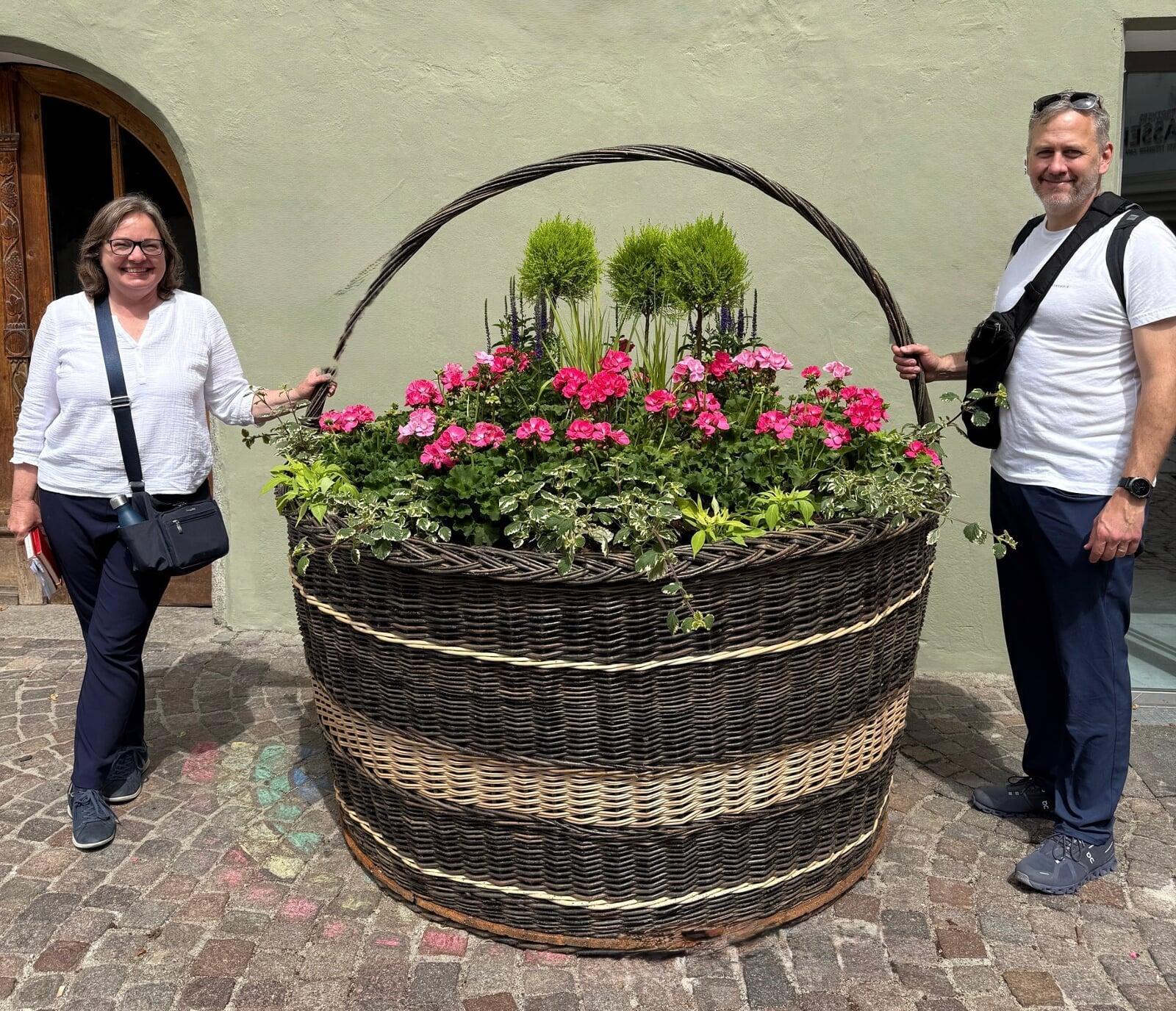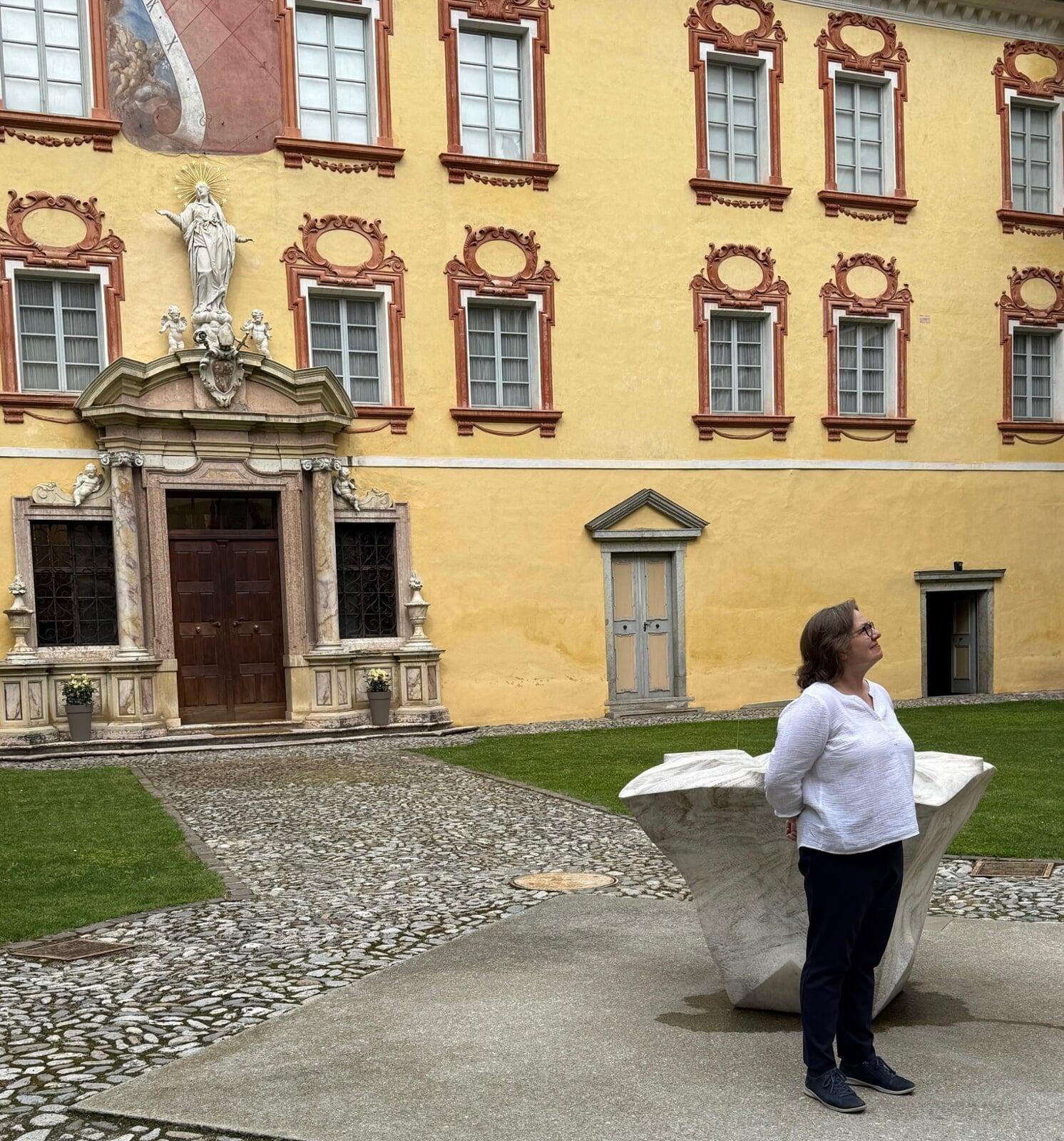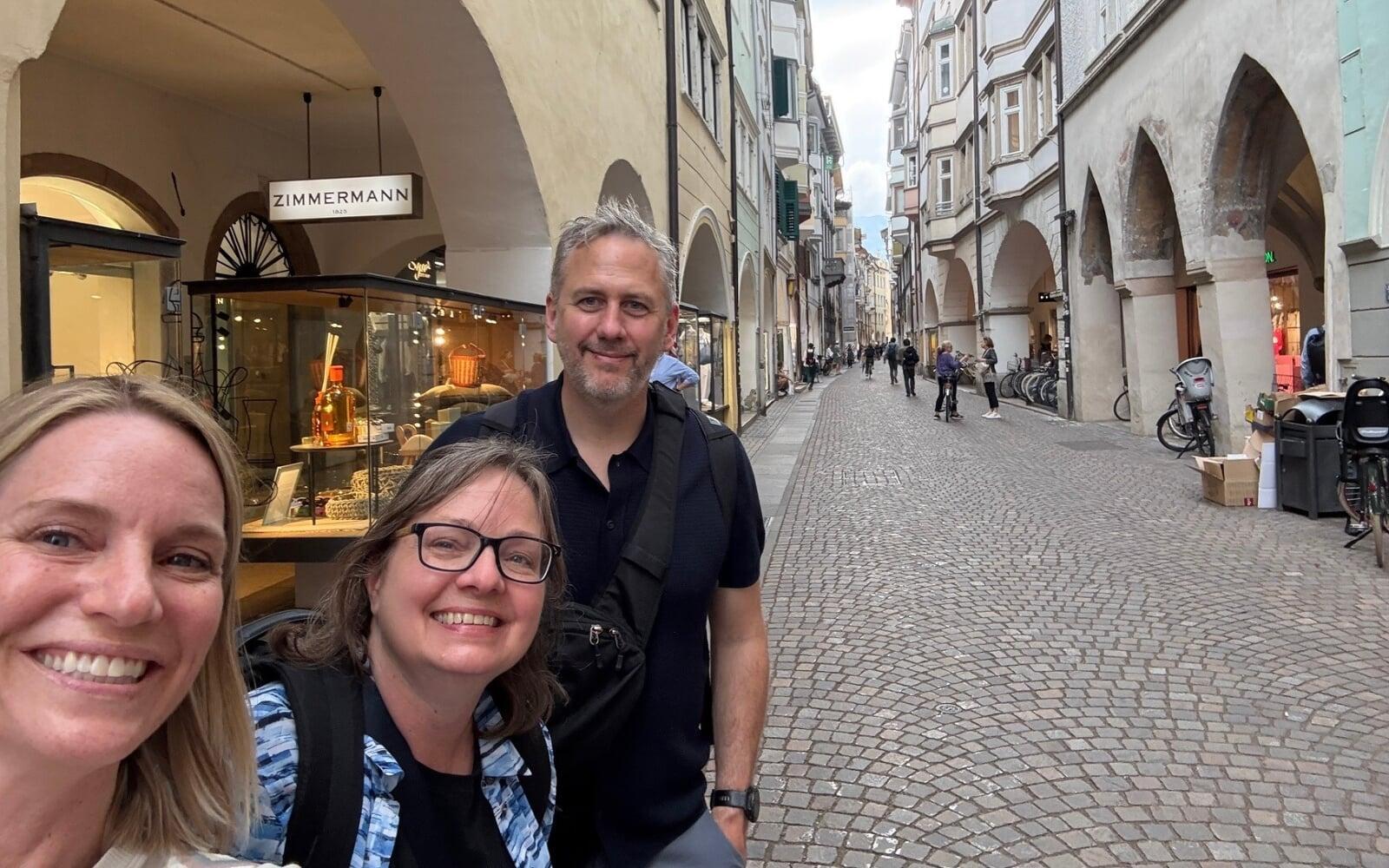Have you ever wondered what it’s like to develop a brand-new tour—walking alongside a leading historian through castles, cathedrals, and cobblestoned towns, uncovering the stories that will shape the journey? That’s exactly what we experienced this past summer with Kimberly Schmidt.

The route from Vienna to Venice not only sets the stage with imperial cities and Alpine landscapes but also follows the path of many Anabaptists sentenced in Austria and transported south to serve as galley slaves. Along the way, we found ourselves knocking on the doors of 500-year-old homes, where owners graciously welcomed us in and allowed us to step inside spaces where Anabaptists once gathered. At times, it felt like a treasure hunt—guided by the stack of books Kimberly carried with her, filled with the work of earlier historians and authors she often consulted. She would pause to cross-check details, pointing us toward the overlooked stories of women who made courageous choices, raised families under pressure, and carried faith into their communities.
While the research was serious, we were also treated to the kind of experiences our future travelers will enjoy—staying in remarkable places and sharing meals that linger in memory. One highlight was the Hotel Elephant in Brixen, a storied inn that has welcomed travelers for centuries with elegance and charm. This tour is intentionally designed with longer stays in fewer locations, so travelers aren’t constantly unpacking and repacking. That slower rhythm allows for more rest, deeper connection, and time to fully soak in each place. Along the way, travelers will enjoy authentic regional specialties, elegant café culture, and Venetian flavors discovered in hidden corners of the city.

In Südtirol, the discoveries came one after another. We wandered the narrow streets of Klausen, a quaint town where traces of Anabaptist presence still linger in the shadows of its medieval walls. We stopped at castles in the Puster Valley where peasants once gathered with hope for a new future. Driving further, the road opened into Alpine meadows at the foot of the Dolomites—stunning landscapes that reminded us how beauty and hardship often lived side by side in this region. In Brixen, we stood inside the Bishop’s Palace and reflected on the interrogations that shaped the lives of ordinary people trying to live their convictions. Each site connected to the larger story Kimberly was helping us uncover—stories of women and peasants who rarely appear in textbooks but whose courage and resilience still matter today.

What stood out most was Kimberly herself. She was patient in teaching us, as “newbies,” the layers of history in these places. She never made us feel that we had to know it all in advance; instead, she wove the stories naturally into what we were experiencing. Whether walking the narrow streets of Klausen or pausing to take in the Alpine meadows of the Dolomites, she connected history with the beauty around us in ways that were both accessible and deeply moving. And that’s what travelers can expect on this tour—you don’t need to be an expert. You can simply enjoy the natural landscapes and cultural experiences, while the history unfolds around you and deepens the connection to the story.
